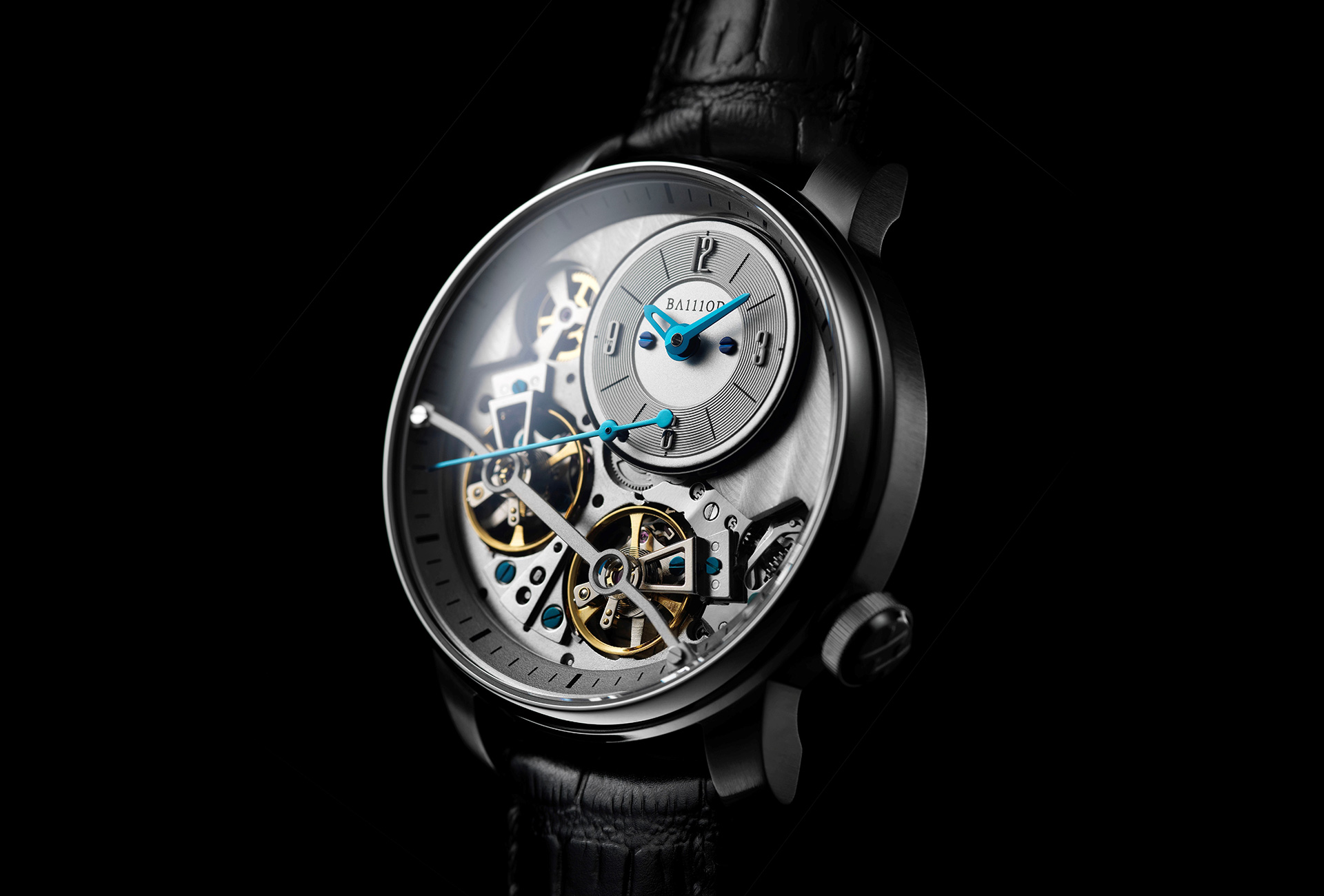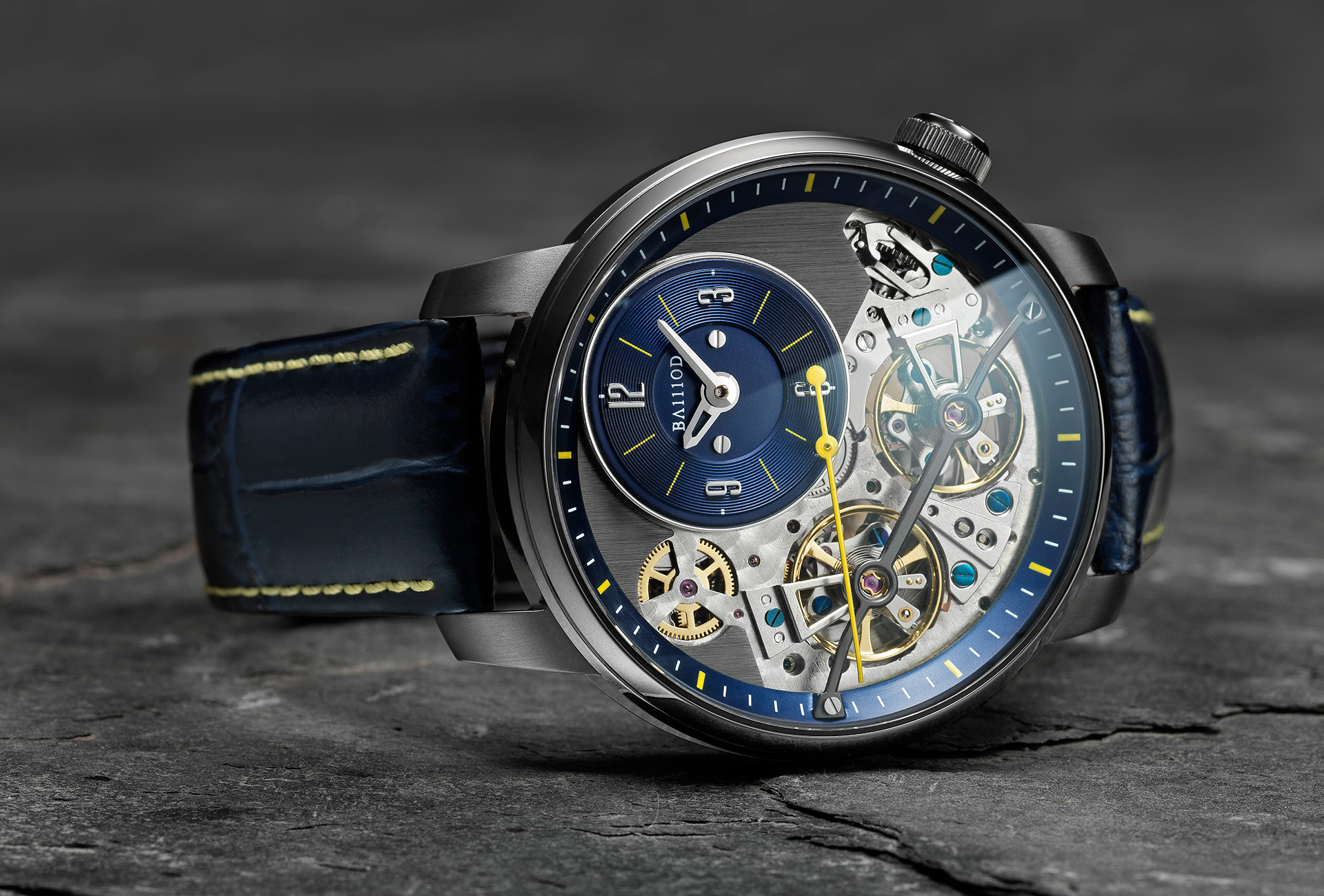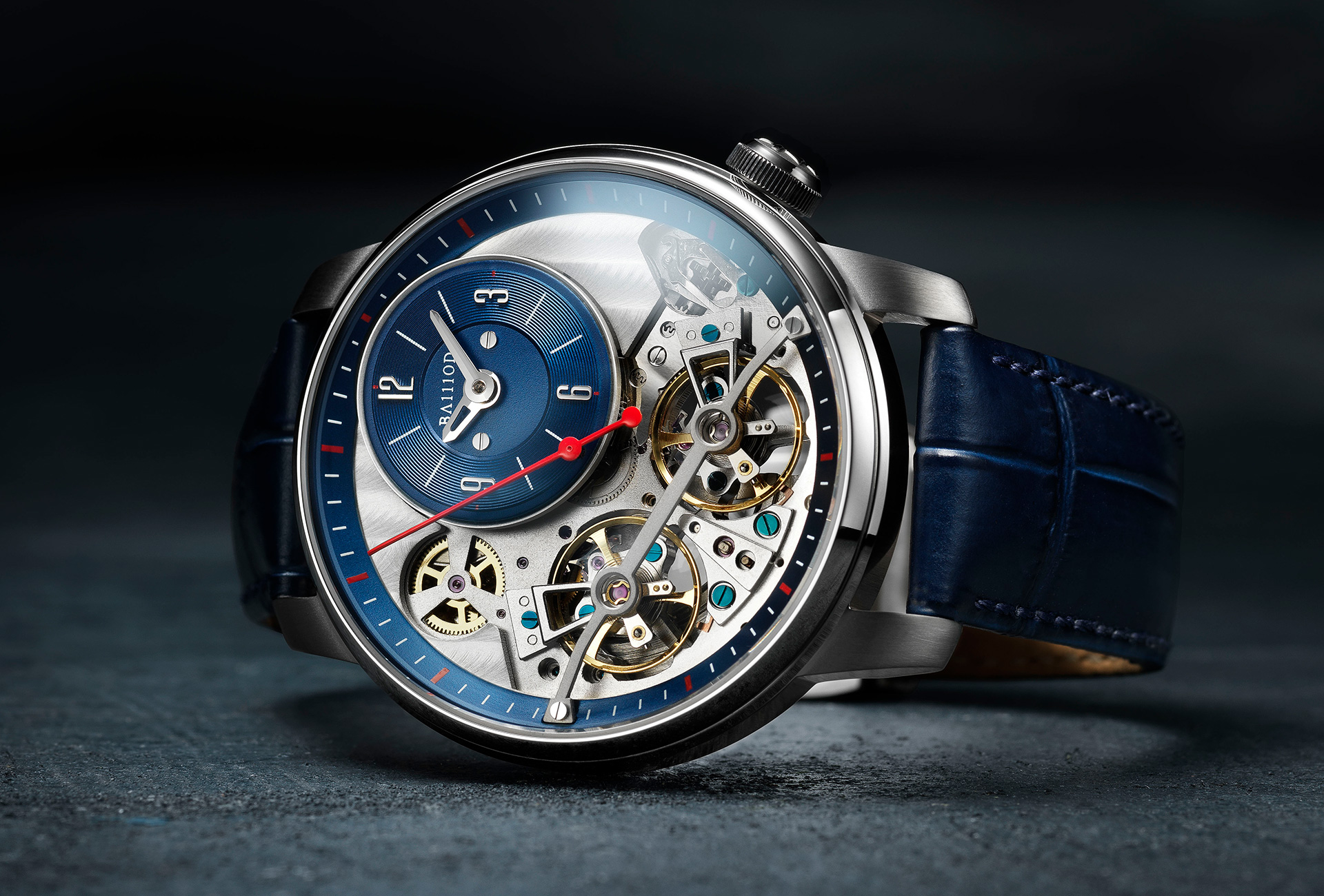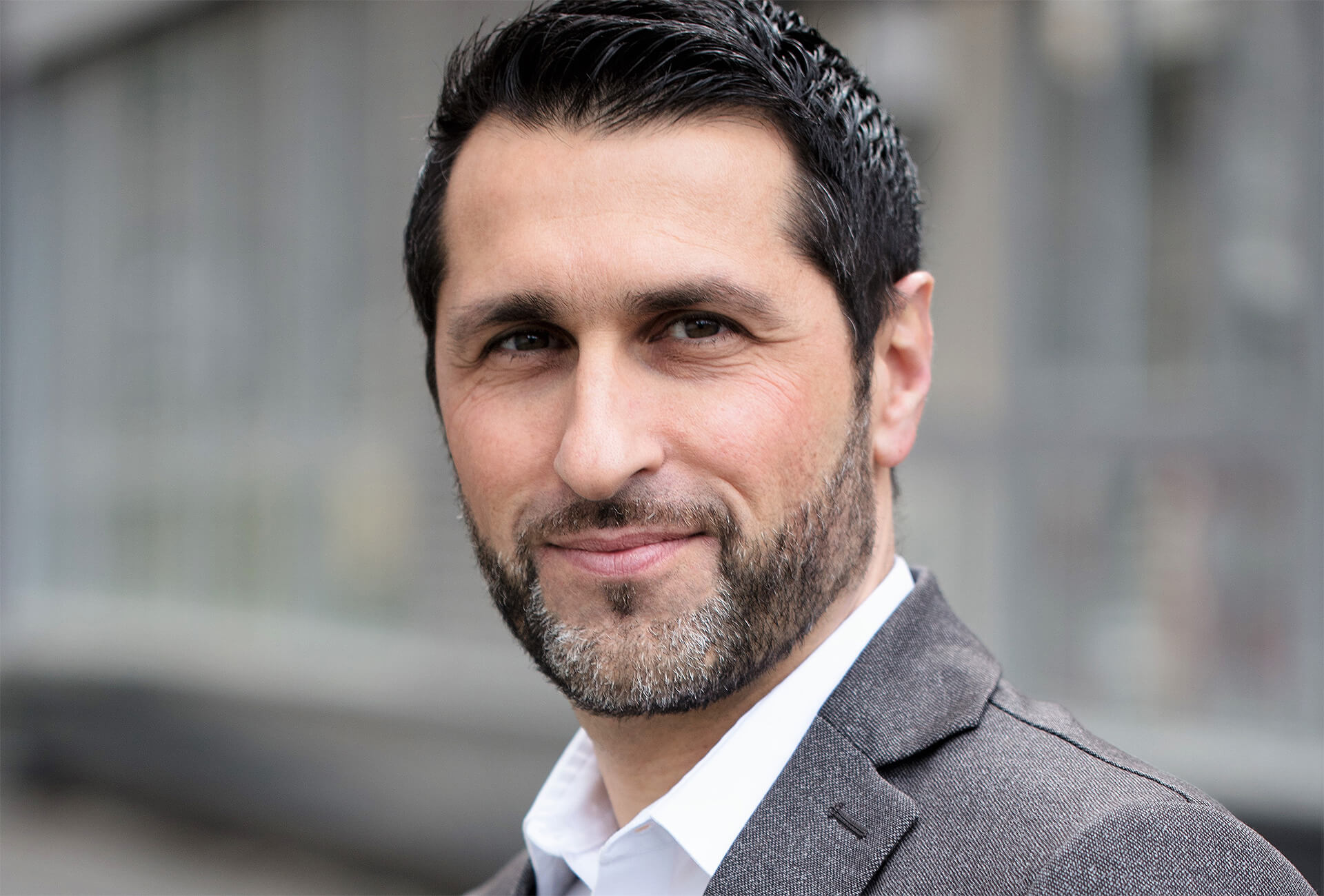BA1110D: while the name doesn’t exactly roll off the tongue, the watch is a lot easier to appreciate. Its architectural design allows a sweeping view of the double oscillator, barrel and winding mechanism of the movement, which is offset by the equivalent of one hour. Housed inside a 43mm steel case with a sapphire crystal and display back, it’s a class act. Better still, it’s positioned at a price most can afford. There’s no secret to this: the BA1110D Chapter 1 is Chinese-made, to an original Swiss design. The brand is upfront about these Asian origins; the point of BA1110D isn’t where the watches are manufactured but how they are distributed. It’s this novel concept that Thomas Baillod set out to demonstrate when he launched the brand just under a year ago (the name incorporates the launch date, 11/10).
Let's get phygital
“I developed the concept three years ago,” he says, “mainly through the Watch Trade Academy I set up in 2018, but the only way to prove this was a valid proposition was to put it into practice. In this respect, BA1110D should really be seen as a life-size laboratory for the ideas I’m building for watch distribution. Brands have been marketing their watches online for a while now, whereas distribution has yet to embrace digital. It’s still very much the same schema. Think of it as a tube. Products are conveyed to the end customer via sacrosanct stores that accumulate thousands of watches in inventory. All of which costs millions.” This isn’t the only factor. Watchmaking in the twenty-first century has faced contextual crises, the latest being the Covid-19 pandemic. A worrying drop in exports of around 25% since 2015 has revealed a further complication, and this one is entirely structural.
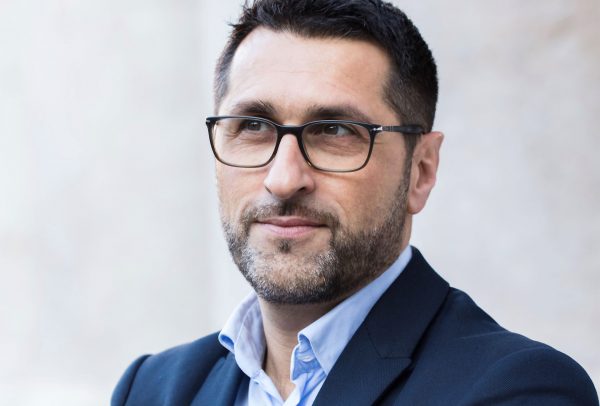
“A brand’s profit is its margin multiplied by the number of watches sold,” Thomas Baillod explains. “When volume sales fall, a brand could decide to offset this decline by upping prices. This would be a risky solution, given low price elasticity in the watch segment, and one that wouldn’t be possible for a great many brands. The alternative would be to sell direct to the customer online. The 300% to 400% the brand recoups on intermediaries’ margins would make up for the drop in the number of units sold. However, by doing this they would be stealing customers from the retailers who are their customers and, unless someone has evidence to the contrary, retailers have always played a hugely important role for brands by providing customers with service and advice. Not to mention the fact that watch fans much prefer to go into a store, try on a watch, and maybe negotiate a price break.” The objective of Thomas Baillod’s phygital model is therefore to reconcile the low-margin in-store customer experience with impersonal but high-margin direct to customer online sales.
The role of the "afluendor"
“The point of the ecosystem,” says Thomas Baillod, “isn’t so much to make fabulous watches. I think the Swiss have proved they know how to do that. The innovation lies with how these watches are sold through a new sequence of processes. What this means in real terms is that I don’t sell watches. The job of most marketing departments is to bring the customer to the point of sale. Well we don’t have points of sale, we have wrists, meaning it’s the people who buy a BA1110D who then make future sales. Each time a person buys a watch, he or she receives four “rights to buy” which they can offer to others. These new buyers sign up on the website and enter their “right to buy” code to purchase their watch and get the four “rights to buy” that go with it. Obviously, each buyer chooses whether to pass on their “rights to buy” or not. If they convert all four into sales, they get a free watch. So you can see why the gap between the price of the watch and perceived value has to be the largest possible. Or why someone would launch a brand with a name nobody can pronounce, that has to be explained. It’s all part of the storytelling which comes down to the customer, or rather what I call the “afluendor”, an ambassador-influencer-vendor. There’s no more “end” customer. The customer becomes part of a circular economy.”
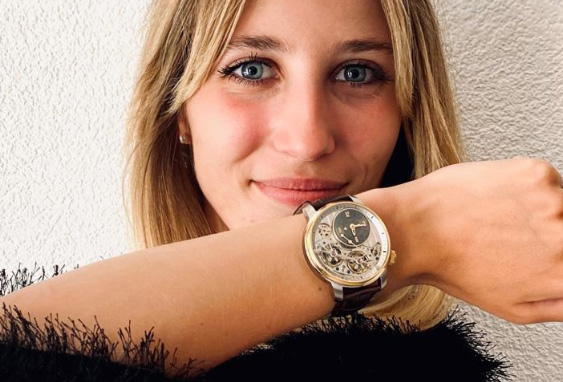
The system, a kind of upgraded Tupperware method, doesn’t do away with the traditional retailer network. There are no variations in price as the final purchase is made from the brand, and no inventory to finance as stores also get “rights to buy” which they give to a customer. The brand then pays them a margin for “services rendered”. The advantage of the system is therefore also its compatibility with the existing set-up. So does it work? To date, BA1110D has sold a thousand watches and will reach CHF 400,000 in revenue before the end of the month. The next step is an app that customers can use to publish information and share impressions, creating an all-important community of fans. A second watch, Chapter 2, is in the pipeline. Set up almost entirely on a mobile phone, helped along by Covid-19, BA1110D doesn’t think outside the box: there is no box.








